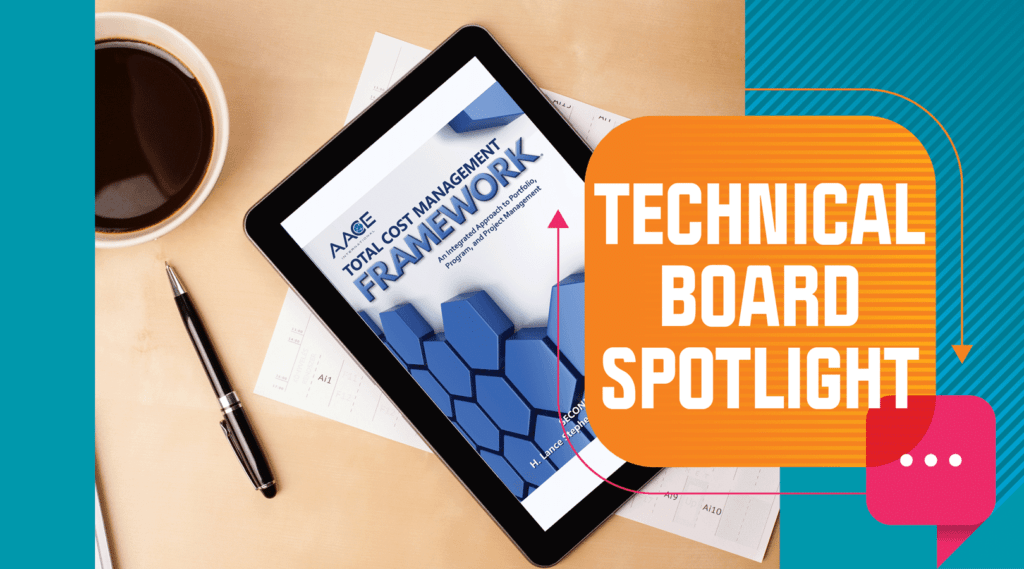Why is a Basis of Estimate Necessary?
By Larry Dysert CCP CEP DRMP
Cost estimates are prepared to support decisions. At an early stage of project development, the decision may be to decide which potential alternative (or alternatives) should be selected to advance to the next stage of development; and eventually the decision may be to authorize full funding of a project based on the economic analysis and business case that has been prepared based on a project estimate.
Most, but not all projects, are approved based on economic evaluations. Organizations attempt to maximize the value of their capital investments, seeking to fund from their limited capital budgets those projects that provide the highest rates of return. The cost estimate is critical to the economic evaluations determining rate of return and other financial metrics upon which a decision will be made.
A decision can be made using a reasoned or intuitive process, and most often a combination of the two. Reasoned decisions are those established on objective assessments of all of the available facts and information. Intuitive decisions, on the other hand, are often based on past experience, and the personal perceptions and values of the decision-maker.
In making capital investment decisions, organizations want to make reasoned decisions that are founded on comprehensive, clearly understood data and information. The estimate is an important component of that information, but if the estimate is presented as just a page of numbers then it provides no context to support its evaluation, and the subsequent decision to be made. A page of numbers or a bottom-line estimate value by itself cannot support reasoned decision-making.
The Basis of Estimate (BOE) is the document that provides the contextual framework for using the estimate to support reasoned decision-making. AACE International Recommend Practice 10S-90 defines a basis document as, “written documentation that describes how an estimate, schedule, or other plan component was developed and defines the information used in support of development. A basis document commonly includes, but is not limited to, a description of the scope included, methodologies used, references and defining deliverables used, assumptions and exclusions made, clarifications, adjustments, and some indication of the level of uncertainty.” [1]
AACE International Recommended Practice 34R-05 states that when prepared correctly “any person with capital project experience can use the BOE to understand and assess the estimate, independent of any other supporting documentation. A well-written BOE achieves those goals by clearly and concisely stating the purpose of the estimate, (i.e., cost study, project options, funding, etc.), the project scope, pricing basis, allowances, assumptions, exclusions, cost risks and opportunities, and any deviations from standard practices” [2]
Todd Pickett, in Preparing a Basis of Estimate, identifies that the “basis of estimate is the instrument used to convey to the owner and other members of the project team that the estimator understand the problem, the proposed solution, and how much the proposed solution is going to cost.” [3]
It is important to understand that an estimate is a prediction of the probable costs for a given scope of work to be completed in the future. An estimate by nature is uncertain, and although some of the information supporting the estimate is objective and factually based, much of the estimate is based on uncertainties that includes potential variations in scope quantification, pricing, required resources, execution strategies, etc. Every estimate is based on an extensive level of assumptions upon which the estimator must make an objective assessment to prepare a cost estimate that is comprehensive, reasonable, and sufficiently accurate to support the purpose and decision for which it is being prepared. Whether it meets these goals cannot be determined from the numerical presentation of the estimate.
The Basis of Estimate provides context to the methods, practices, adequacy of the information and assumptions utilized in the development of the estimate. It provides thorough and reliable information to support effective estimate review and validation; and once approved can then be used to support sound business decisions for capital investment decisions. An important part of estimate validation and subsequent support for the investment decision is to understand the explicit or inherent cost strategy (cost effectiveness versus predictability) that may impact the eventual achievability of the estimate. [4]
The BOE is equally important for effective project controls, from establishing initial work packaging and contract management to supporting performance assessment and change management. It supports effective project schedule development and control. It provides the needed framework to understand the combination of identified scope and costs included in the estimate. AACE International’s Total Cost Management Framework identifies the Basis of Estimate as a required component of every cost estimate. [5]
To summarize, the main purpose of cost estimates is to support decisions to maximize the value of an organization’s capital investments. Without a Basis of Estimate, the decision maker must rely on an intuitive approach to decision-making. A well-written Basis of Estimate allows decision-makers to make reasoned and informed decisions, reducing the level of intuitiveness, to maximize cost investment performance for their organizations.
REFERENCES
- AACE International, “RP 10S-90,” AACE International Recommended Practices, October 10, 2019.
- AACE International, “RP 34R-05: Basis of Estimate,” AACE International Recommended Practices, May 2, 2014.
- Pickett, Todd, “Preparing a Basis of Estimate,” 2005 AACE International Transactions, EST.10, 2005.
- Hollmann, John K., “Estimate Validation and Bias Assessment: Ratio to Driver Method,” 2019 AACE International Transactions, EST.3184, 2019.
- Stephenson, H. Lance, Editor, “Total Cost Management Framework,” 2nd Edition, 2015.
Rate this post
Click on a star to rate it!
Average rating 4.5 / 5. Vote count: 2
No votes so far! Be the first to rate this post.

